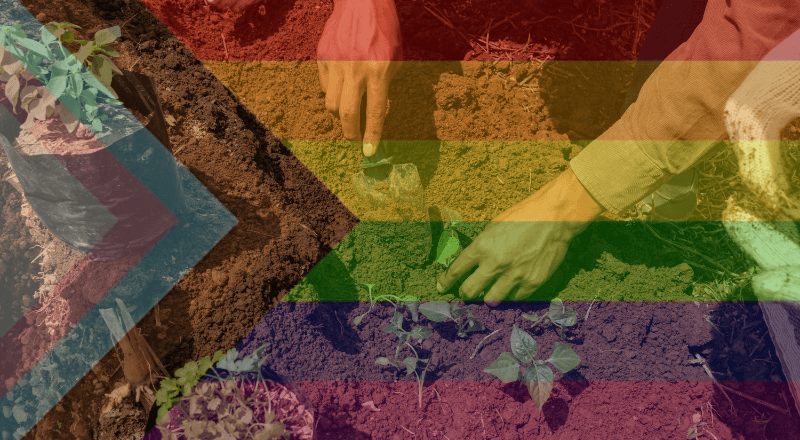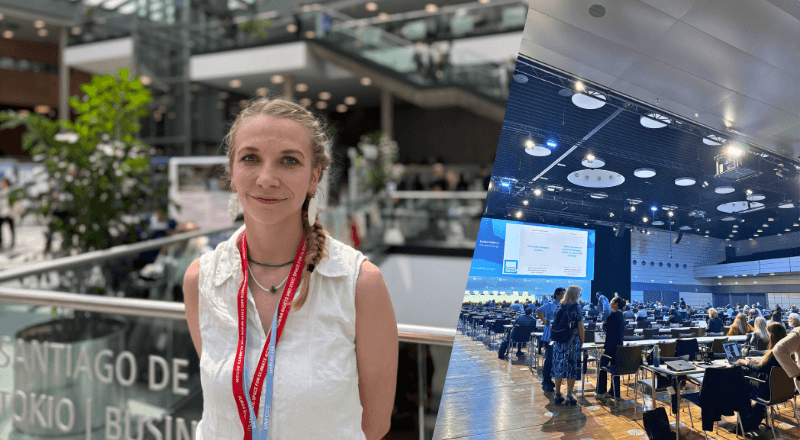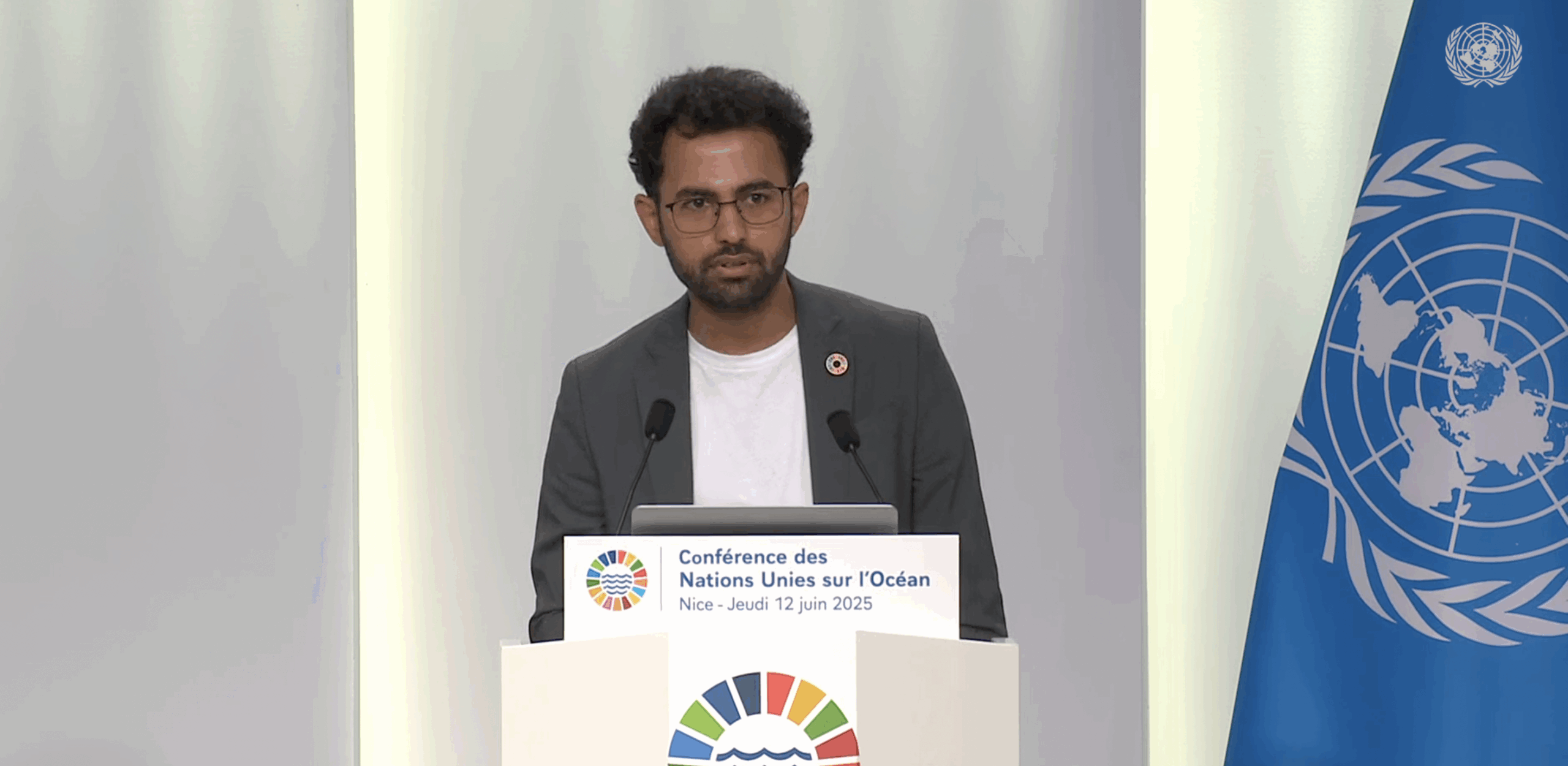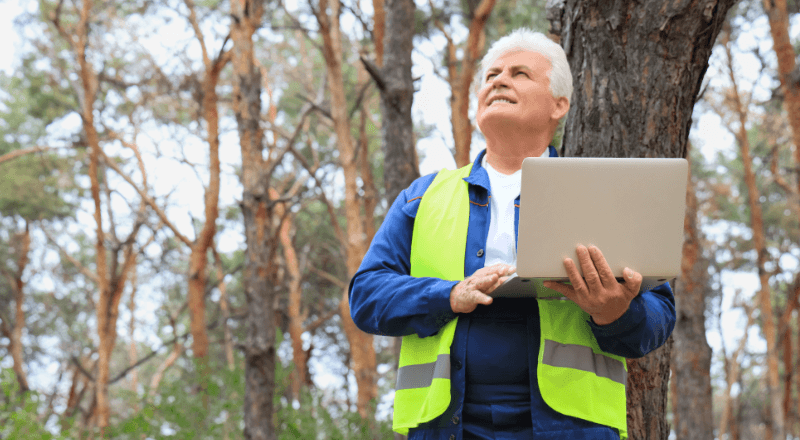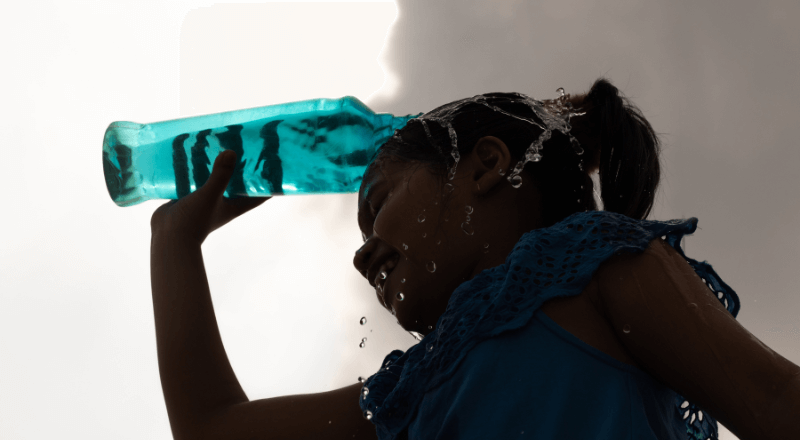
Loss of forest cover and biodiversity can often bring conflict between humans and wildlife if left unaddressed. This is the case in Western Uganda where the Bulindi Chimpanzee and Community Project (BCCP) is working with local communities to address these challenges.
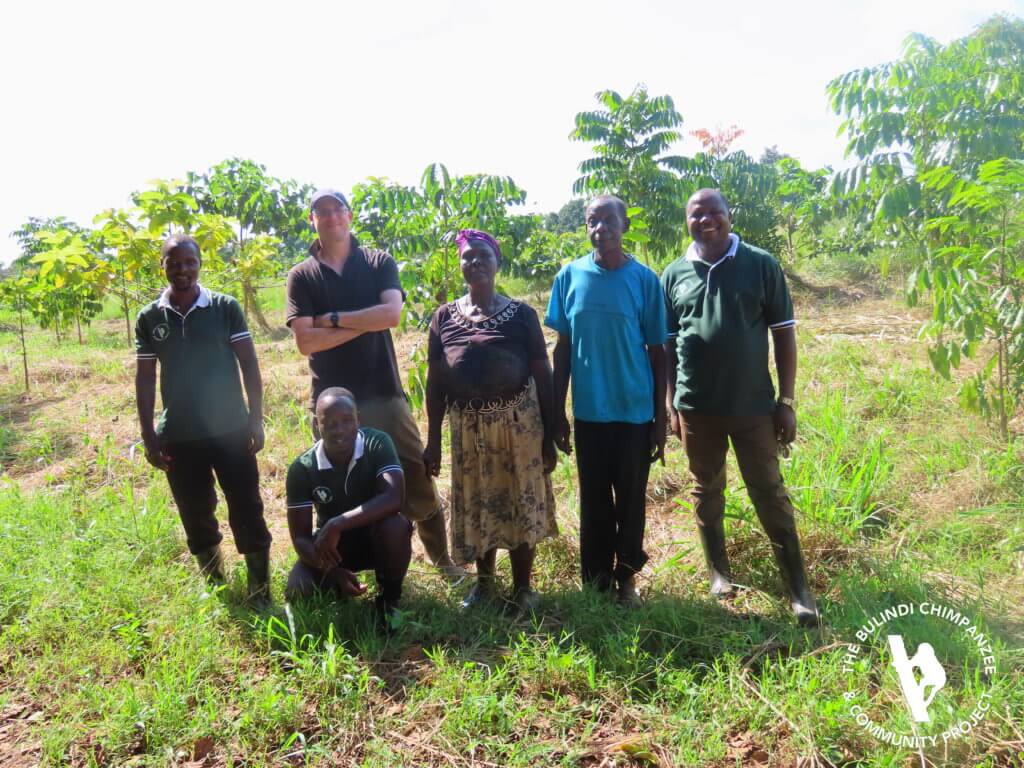
We spoke to Dr. Matt McLennan, a British primatologist who first came to Uganda in 2006 as a researcher to study wild chimpanzees living in an unprotected habitat close to villages. He founded BCCP in 2014 to help conserve the chimpanzees’ forest home, which was being rapidly converted to farmland, and to support the local households who share their environment with the chimps.
Addressing Deforestation and Human-Wildlife Conflict
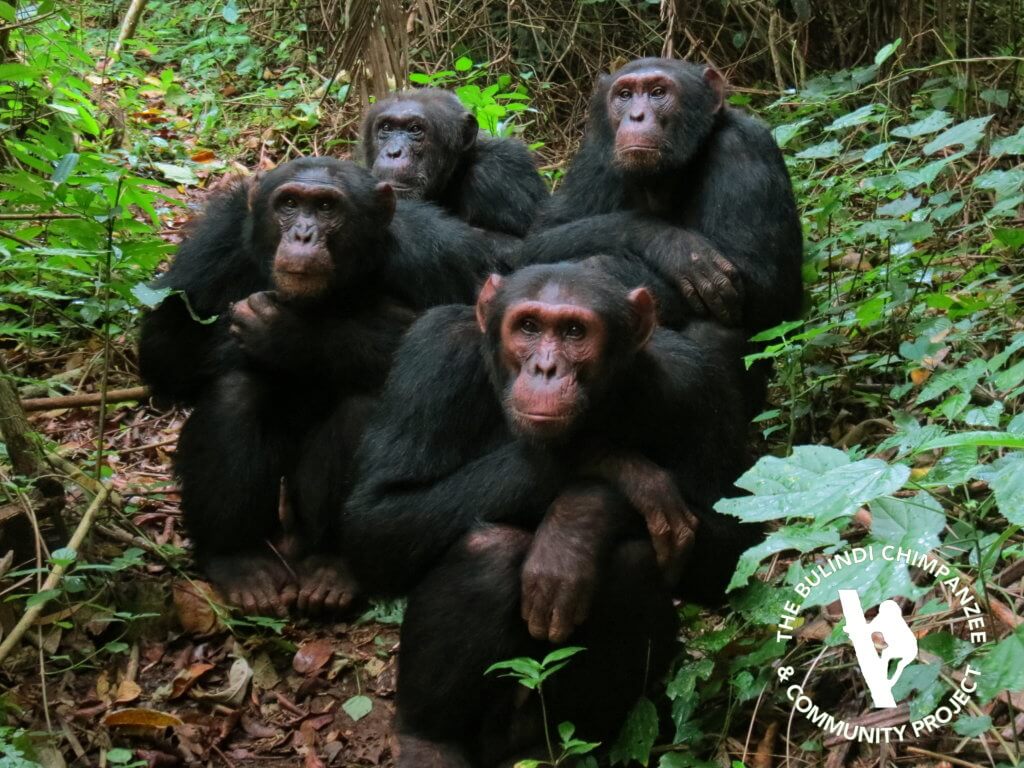
Dr. Matt McLennan: The ecosystem we work in is an unprotected mosaic landscape in Western Uganda, covering about 1,000 square kilometers. Today, it’s dominated by agricultural land, villages and urban centers, which probably sounds like an unlikely habitat for wild chimpanzees! The region is cross-crossed by riparian valleys and wetlands, however, which were formerly forested and provided habitat for about 300 chimpanzees, among other threatened wildlife. In recent decades, the natural forests along these watercourses have been mostly cleared for farming, timber and other land uses to support the needs of a growing human population.
Rapid deforestation has had a negative impact on local climate, water and biodiversity, and it’s caused escalating human-wildlife conflicts – especially between villagers and the region’s wild chimpanzees, which were forced into competition with people over space and resources. BCCP was established as a grassroots project to address these environmental challenges for the benefit of people, chimps, and the environment. Aside from myself, the 28-strong field team are all Ugandan and most staff are local to the region where the project operates.
Much of our work is focused on supporting local people and addressing their needs and priorities. The region’s chimpanzees live on land that belongs to many hundreds of village households. By helping them to develop livelihood alternatives to deforestation, among other benefits and opportunities, we can increase people’s capacity to accommodate living alongside the chimps and engage in environmental conservation – including planting trees!
Support from Local Community and Co-benefits
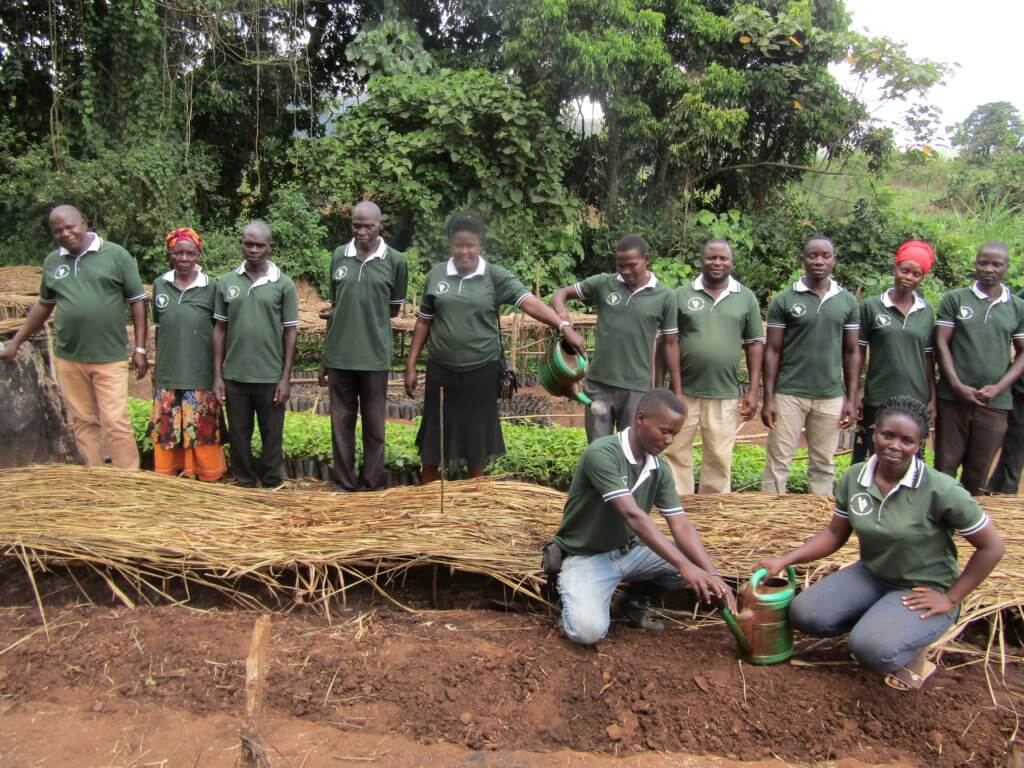
Conservation outside of protected areas is always going to involve challenges, but I’m very proud of the positive impacts BCCP is having. For example, each year about 800 landowners plant trees with us, which is a good indicator of the level of community engagement! Importantly, we implement our tree planting program in parallel with a variety of other community initiatives, including support for village savings and loan associations, constructing water boreholes and energy cook stoves, and education outreach in schools and villages. We also sponsor the schoolchildren of households who own fragments of forest used by the chimpanzees – this latter program has been really successful at helping families maintain natural forest on their land, which is critical remaining habitat for chimpanzees. Many of the farmers who plant trees with us also benefit from these other initiatives, and the project is getting increasing support from local communities.
The good news is we’re starting to see the positive impact of tree planting for the chimpanzees (and other wildlife). For example, trees that are growing in previously open farmland are providing cover and supplementary habitat – we’re starting to see chimpanzees using these woodlots and reforested areas, with the trees facilitating their movement in the landscape.
Discovering Plant-for-the-Planet
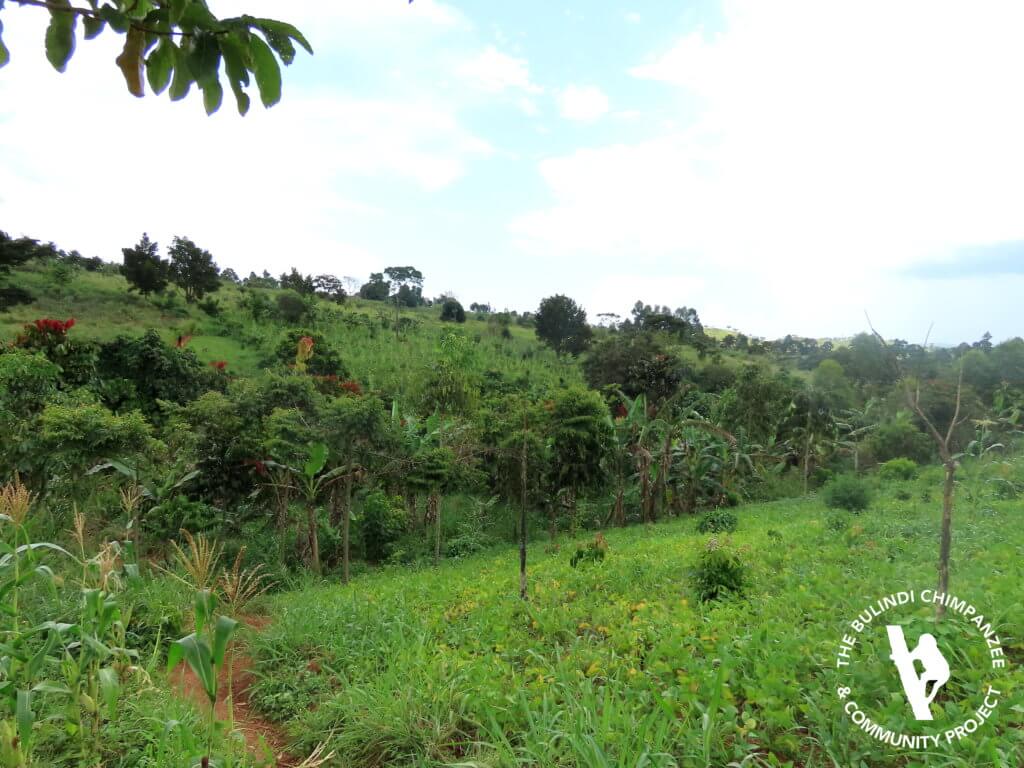
We came across Plant-for-the-Planet whilst searching online for opportunities to support our expanding tree-planting program. That was back in 2018.
We’re using the Plant-for-the-Planet platform to help showcase our work, and to reach potential donors who would be interested to support a grassroots project such as ours that combines community-led tree planting on a large scale with the conservation of an endangered great ape – and we do this on an exceptionally efficient budget! We’re proud to be a part of this fantastic global initiative!
Planting and Growing Seasons: From Donations to Planting
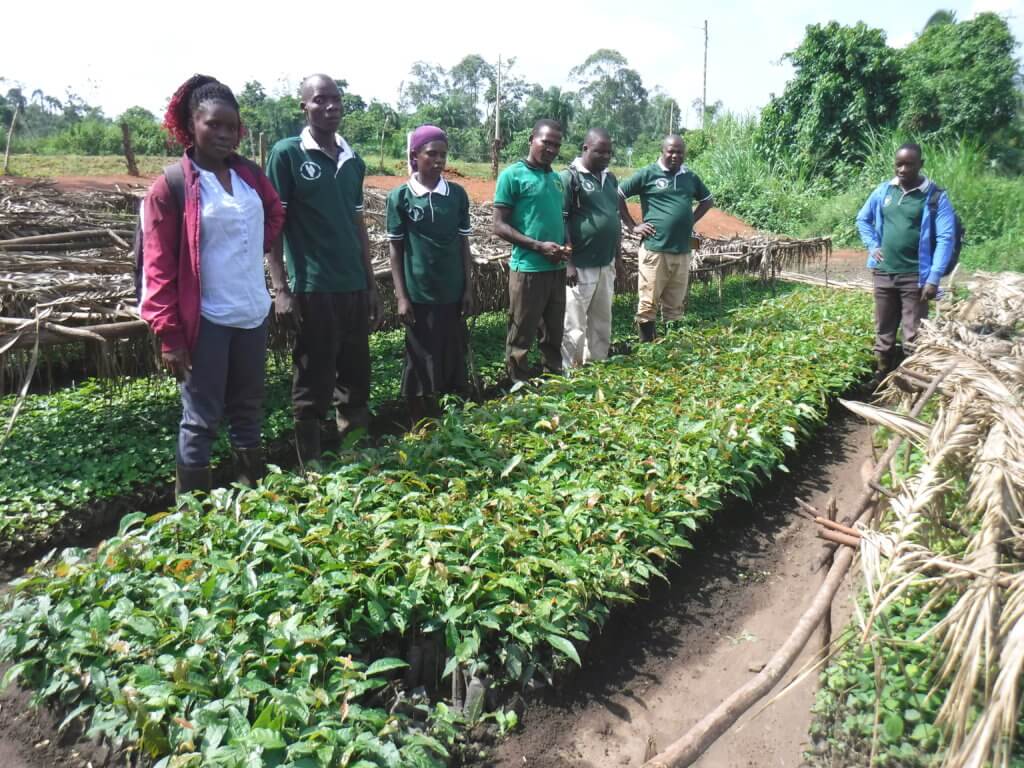
Thanks to the generous support we’ve received from a huge number of people and institutions, we’ve been able to implement our tree-planting project continuously since 2017. We currently run five full-time tree nurseries. There are two annual planting seasons in this part of Uganda, coinciding with wet seasons in March to May and August to October. The remaining months are growing seasons. We start preparing nurseries four to five months before the next planting season, buying seeds and other materials. Depending on the species, some seedlings require two seasons in the nurseries to mature, while others are ready for planting in just a few months after germination.
Prior to planting, our team registers farmers who are interested in planting, do land checks, and train the farmers in ‘best practice’ planting and management techniques. Once all that’s done and the healthy seedlings are ready for planting, it’s a matter of waiting for the rains to start! Then we give farmers the go-ahead to collect their seedlings and plant.
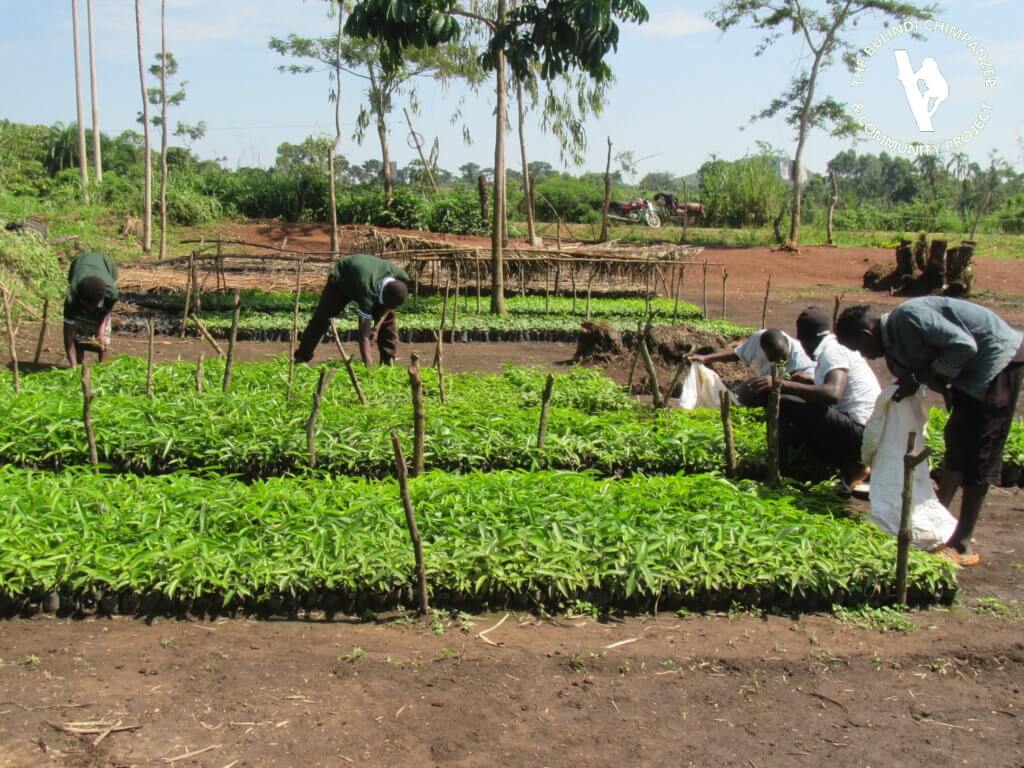
During planting seasons the team visits the farmers to check on the status of the seedlings and offer further support, as needed. We formally evaluate the planted trees 5-6 months after planting and continue following up on their progress in the months and years to come. While in the first year the seedlings remain small and inconspicuous, by the second and third years the young trees start to become visible in the landscape. It’s really satisfying to see!
For the past three years, we’ve raised and supplied farmers with over 1 million trees each year for planting. I’d like to thank everyone who’s supported our program. We’re very grateful for all the donations we receive!
Working with Local Farmers, Empowering the Community
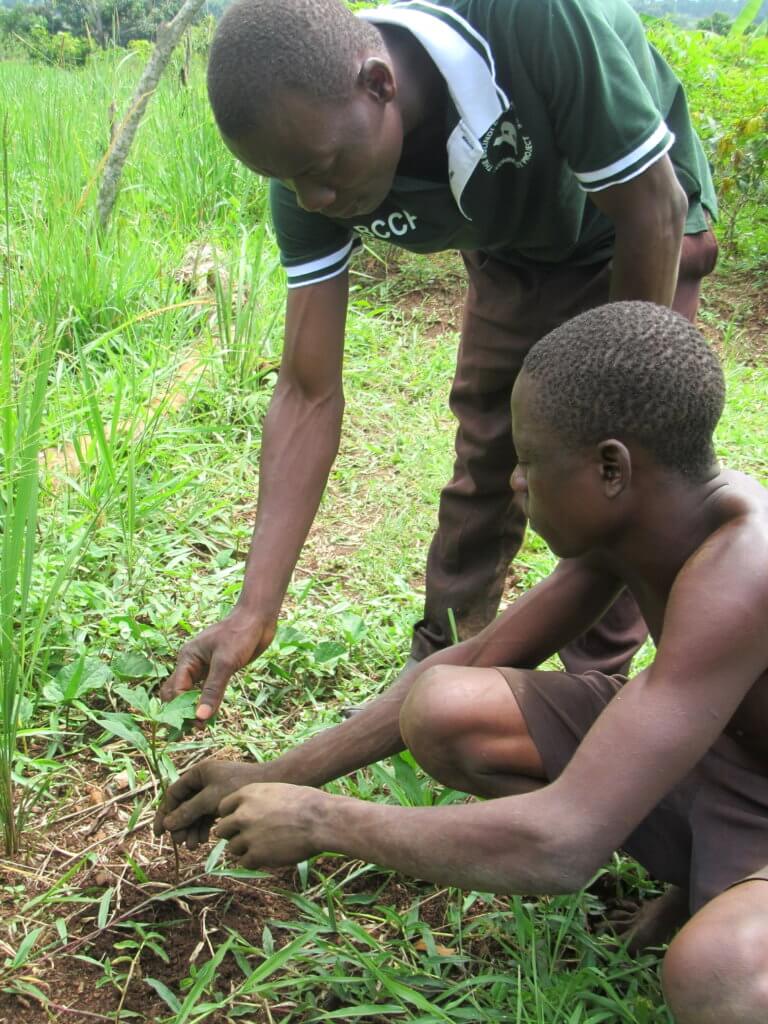
Our tree planting program is a community program. The trees are planted by local people on their own land. We supply farmers who are willing (and have the capacity) to plant with tree seedlings free of charge, and our experienced team offers them formal training in tree planting and agroforestry techniques, as well as informal guidance and support. Each year about 800 local farmers – both men and women – plant trees with us. During the last 3 years, 34% of the farmers who we trained were women, and 43% of farmers were young adults below the age of 35.
Choosing Species and the Unique Importance of Planting Coffee
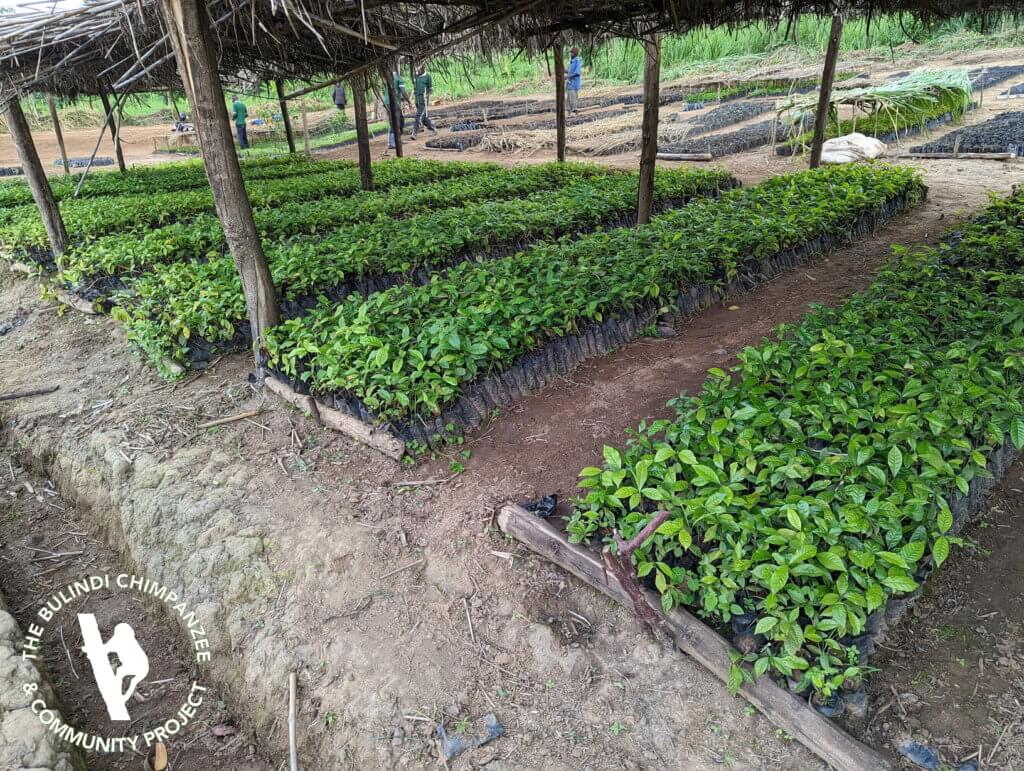
We raise all our seedlings ourselves in our full-time tree nurseries. It’s many times more economical to raise seedlings from seed than to buy seedlings from suppliers. Of course, you have to have the technical expertise and knowledge to raise tree seedlings successfully, which is especially true for many indigenous forest species. In our case, we have a team of qualified foresters and agro-foresters with many years of experience raising seedlings and managing tree nurseries in this part of Uganda.
We raise seedlings for three different purposes: first, we raise indigenous forest species for habitat enrichment, riverine corridor restoration, and as shade in agroforestry. We’re currently raising and planting seven different forest species, all of which occur naturally in forests regionally. These include Khaya, Maesopsis, Milicia, Albizia, Cordia, Prunus, and Markhamia. Second, we raise fast-growing Eucalyptus and Terminalia so that local households can establish woodlots near their homes. People sometimes wonder why we supply farmers with these exotics, but in fact they play a really important role: people must have an alternative and sustainable source of wood for cooking and timber, otherwise they have no choice but to cut natural forest trees.
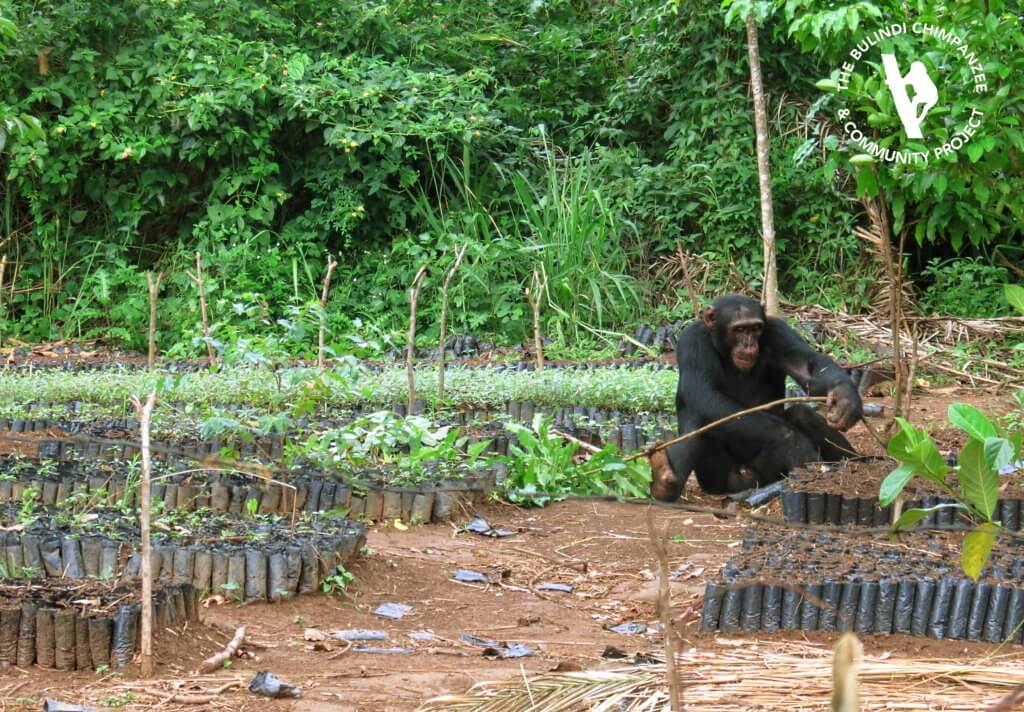
Third, we raise and supply coffee as an alternative (non-forest dependent) livelihood for local households. Whereas other cash crops like tobacco, sugarcane and rice have been major drivers of deforestation regionally, farmers don’t clear forests to grow coffee since it grows well in existing agricultural gardens. Coffee is also ‘chimp friendly’ because chimpanzees don’t eat the coffee berries, which means coffee farming doesn’t spark conflicts between farmers and the chimps (like sugarcane and maize does, for example). The coffee can generate important income for local households once trees mature and produce harvests in under three years.
Sustainable Tree Planting Requires Experience and Expertise
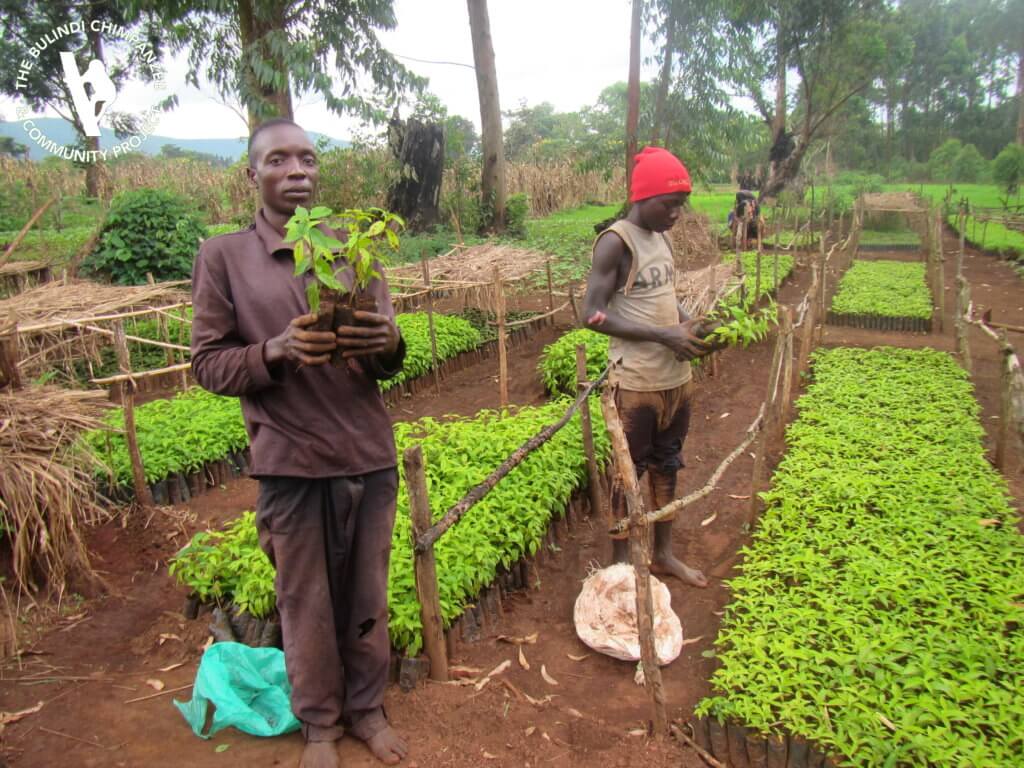
I would like to extend my thanks and congratulations to all the organizations and individuals who are getting involved in tree planting! Around the world, the enthusiasm and passion for planting trees and restoring degraded ecosystems are growing – it’s great to see and also to be a part of this movement.
On the technical side, I’d emphasize that raising and planting trees is not easy! Without experience and skill, many of the precious seedlings won’t survive. Planting projects can get poor results or even fail because of a lack of proper expertise. So, it’s really important to have experienced and knowledgeable individuals on your team to get the best results and healthy trees!
Visit Bulindi Chimpanzee and Community Project (BCCP) to learn more.
